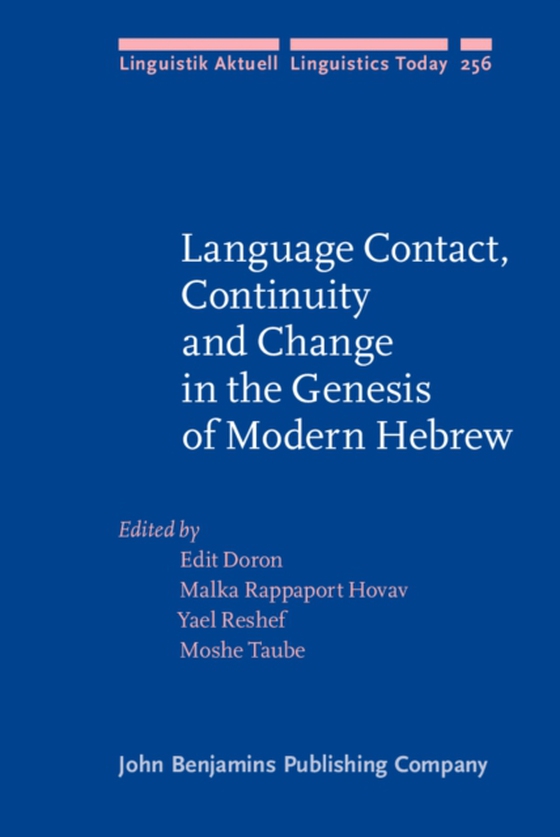
Language Contact, Continuity and Change in the Genesis of Modern Hebrew e-bog
802,25 DKK
(inkl. moms 1002,81 DKK)
The emergence of Modern Hebrew as a spoken language constitutes a unique event in modern history: a language which for generations only existed in the written mode underwent a process popularly called "e;revival"e;, acquiring native speakers and becoming a language spoken for everyday use. Despite the attention it has drawn, this particular case of language-shift, which differs from the...
E-bog
802,25 DKK
Udgivet
18 september 2019
Længde
400 sider
Genrer
2CSJ
Sprog
English
Format
pdf
Beskyttelse
LCP
ISBN
9789027262431
The emergence of Modern Hebrew as a spoken language constitutes a unique event in modern history: a language which for generations only existed in the written mode underwent a process popularly called "e;revival"e;, acquiring native speakers and becoming a language spoken for everyday use. Despite the attention it has drawn, this particular case of language-shift, which differs from the better-documented cases of creoles and mixed languages, has not been discussed within the framework of the literature on contact-induced change. The linguistic properties of the process have not been systematically studied, and the status of the emergent language as a (dis)continuous stage of its historical sources has not been evaluated in the context of other known cases of language shift. The present collection presents detailed case studies of the syntactic evolution of Modern Hebrew, alongside general theoretical discussion, with the aim of bringing the case of Hebrew to the attention of language-contact scholars, while bringing the insights of the literature on language contact to help shed light on the case of Hebrew.
 Dansk
Dansk

